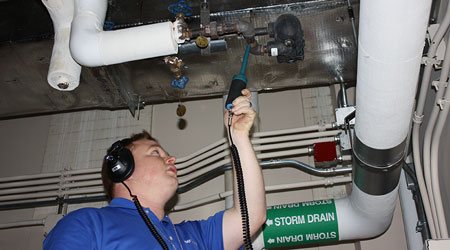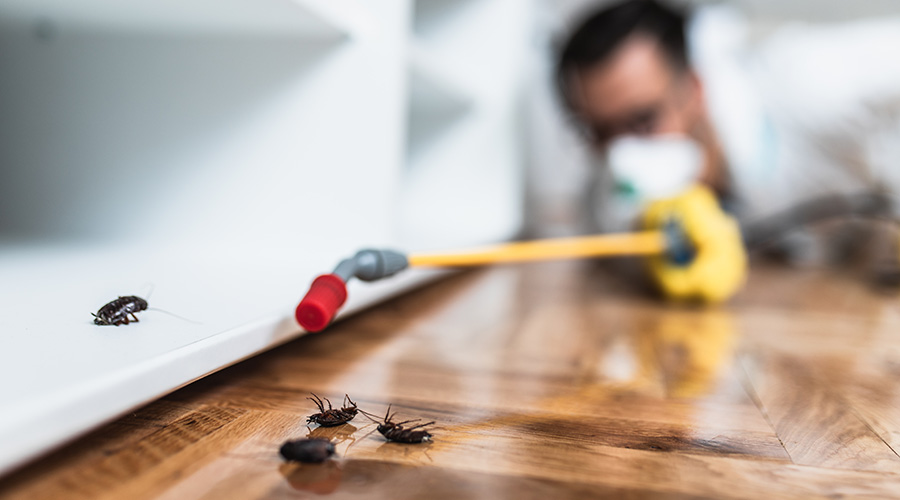3 Reasons Your Steam Traps Are Failing
If your facility uses steam, it has steam traps. Some of them are likely failing and costing you money.
Building owners and operators of large facilities are always looking for ways to reduce expenses and enhance efficiency. Whether it’s a hospital, university, or a manufacturing facility, one of the most environmentally efficient and cost-effective updates is also one of the simplest and overlooked: steam trap evaluation and replacement.
While one failed steam trap does not make much of a difference, 1,000 certainly will — large facilities can easily have that many or more. When these steam traps fail, energy is wasted, ultimately increasing a building’s carbon footprint and overall maintenance costs.
Any facility that uses steam has steam traps. The steam trap has a simple job. While there are different types of steam traps for specific applications, their fundamental purpose remains the same: to remove condensate from steam pipes and keep steam in the pipe.
If the condensate is not removed from the steam pipe, there is potential for a dangerous water hammer situation, which can result in system damage and operator injury. Alternatively, if a steam trap fails open, it will allow live steam to pass through resulting in wasted energy.
Assuming the steam trap is working effectively and operates continuously, it makes it all too easy to forget about these little workhorses. According to the U.S. Department of Energy, the annual failure rate of steam traps is approximately 5 percent. Therefore, if it has been five years since the last steam trap evaluation at a university campus, for example, it is likely that 2 percent of the traps in the system have failed — meaning money lost for building owners.
Top 3 Failures
Location: Steam traps should be located at the lowest natural and incidental low points (low points created by closing a valve) in the steam system. Like other utilities, the steam pipes and the associated steam traps are located in areas most conducive to serving the building or process, not necessarily in a maintainable location.
Steam traps can be found in mechanical rooms, drop panel ceilings, in manholes, in pipe chases, under false floors, and in countless other inaccessible locations. Out of sight, out of mind.
Failed steam traps rarely exhibit symptoms enough for building occupants to initiate a maintenance ticket. The steam system will still work. The heat will still work. The process will still work. The failed steam traps typically aren’t loud enough for anyone to even notice. It takes a deliberate effort for someone to go find, evaluate, and replace failed steam traps.
Staffing: There is a shortage of skilled trade personnel who can repair or replace a steam trap and a low interest in skilled trade work. Half the population of skilled trade personnel are nearing retirement. Additionally, according to the National Association of Home Builders, only 3 percent of poll respondents in the 18- to 25-year-old age bracket would pursue a skilled trade.
The reduced potential workforce is complicated at large facilities by geographic instead of skill set responsibility. For example, there might be one maintenance group serving all the needs of a building or department. In a specialized building, such as a laboratory or manufacturing facility, the focus is typically on the specialized equipment, not steam traps. On most facilities, the utilities group line of responsibility stops at the building wall or at the first heat exchanger.
In these days of reduced budgets, some facilities look to reduce costs by the ‘easiest’ way possible. Skilled trade personnel are frequently the first to be separated through labor reduction. Sure, it saves money now, but so does not changing the oil in your car.
Costs: There are hundreds or thousands of steam traps to survey and replace, a 5% annual failure rate, and locations in hard-to-reach spots, all being maintained by a diminished staff. What does it actually cost? The cost shows up in two distinct ways: the lost thermal energy through the steam trap and downstream damage.
The most common failure mechanism for a steam trap is failed open. Steam flows through it continuously. It behaves as a customer on the steam system. The discussion of the loss below assumes the mass of steam going through the steam trap is ultimately recovered as condensate.
The steam loss through the trap is governed by Napier’s Equation: m=24.24*P*D2, where m = mass flow of steam in pounds per hour, P = Absolute Pressure of the steam, and D is the orifice diameter.
Using a typical steam distribution pressure of 150 PSIG (165 PSIA), and a steam trap orifice size of 1/8 inches, the steam mass flow lost through this steam trap is 65 pounds per hour (PPH). For a full year, this trap will lose approximately 548,000 pounds of steam. Assuming $10/1,000 pounds of steam generated, this one steam trap is costing the owner nearly $5,500 per year. This means if there are 500 steam traps at the facility and 15 percent are leaking (75 traps), combined they are costing the owner $400,000 annually.
The calculated environmental damage from this ‘small’ problem is approximately 40 tons of greenhouse gas emissions, equivalent to eight cars on the road for a year.
The other, but harder to quantify cost, is the damage to downstream equipment. The steam going through the failed steam trap is hotter than condensate, and it will heat the downstream condensate pipes and equipment. If enough steam is leaking into a condensate system, it will raise the temperature of the condensate to near saturation. The seals of most commercial duty condensate receivers and pumps are not rated for saturated condensate. If your facility is constantly replacing problematic pumps or if there is live steam blowing out the vent of a condensate receiver, the root cause is likely failed steam traps. The failed pump seals are the symptom.
Related Topics:













